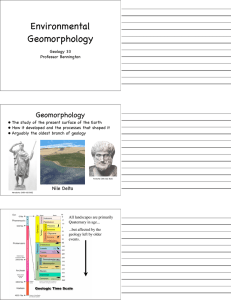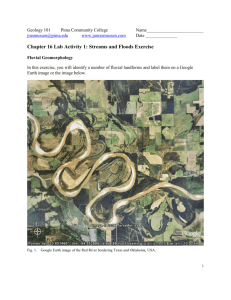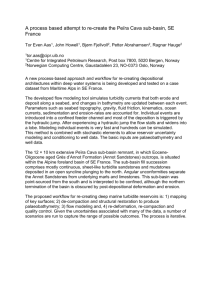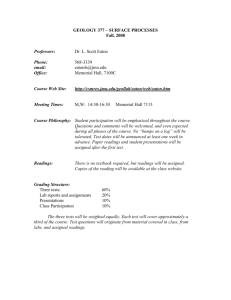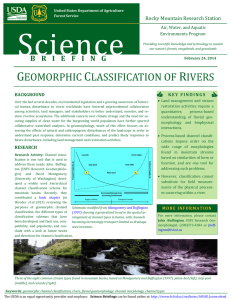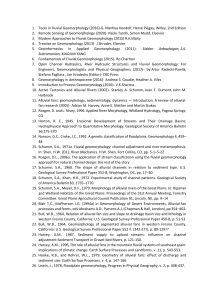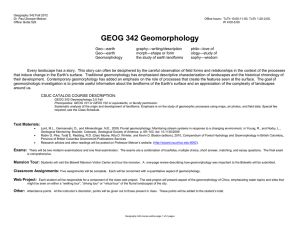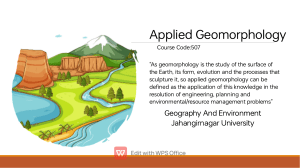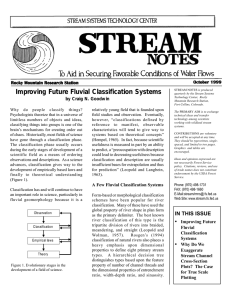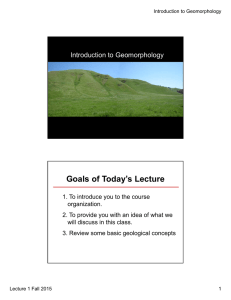Londono gsa 29_10
advertisement
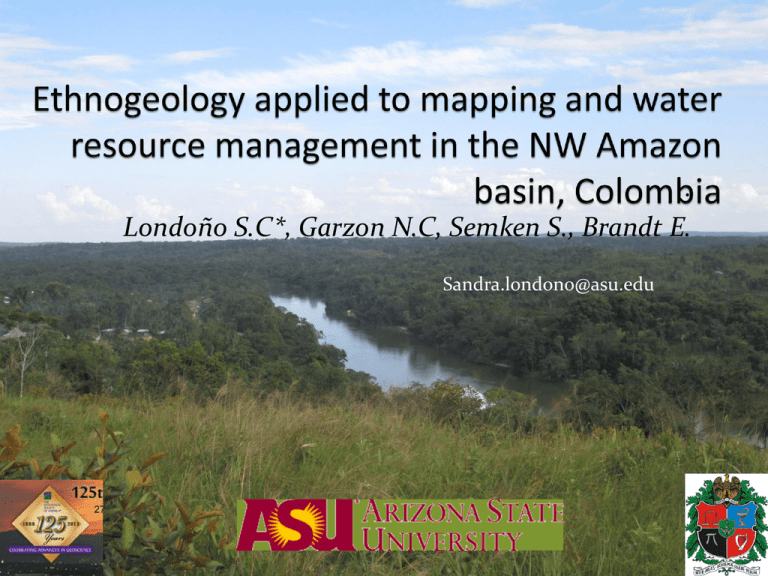
. Londoño S.C*, Garzon N.C, Semken S., Brandt E. Sandra.londono@asu.edu Ethnogeology Study of cultural-based understanding, assessment, and use of geological knowledge. Ethnography Cañon de Araracuara, Caquetá, Colombia Ethnogeology applied to water resources in the NW Amazon basin COLOMBIA PERU Our principal goal was to better serve needs and concerns of this native community in their homeland region. Limits of the Predio Putumayo (Reservation) Methods Ethnography Geology 1. Tribal permits and documenting Informed consent 1. General and local study of fluvial systems and geomorphology (Satelite imagery, Google Earth, literature review) 2. Field work: Collection of cultural data using PAR *Workshop 2. Field geology methods: *Interviews (informal and semi• Observations and structured) measurements *Guided Field trips • Sampling. • Georeference springs, water bodies. 3. Analysis of cultural data 3. Data analysis and processing: Implementing GIS. • Watershed analysis Workshop The Water World. –A dialogue between Native and Earth Sciences. PAR Approach • Offer basic conceptual tools from geology to understand the study of water and fluvial systems. • Identify perceptions, problems and concerns related to the water resource. • Initiate a process of proposal writing. Field work Moniya Amena. The Tree of Abundance. “The giant tree fell, its base is the water of the dawn, the big water, trunk forming the Amazon, its big branches forming the main tributaries,. The fruits of the tree became fishes, some say the leaves became the forest. It is the origin of the rivers and its creatures” Moniya Amena. Uitoto Myth This transversal myth the tree metaphor is used to obtain relatively rich knowledge about the river environment. The River is a Tree Metaphor theory (Lakoff & Johnson, 1980). The tree is an organizing principle. Mapping of the source domain (tree) into the target domain (river system) produces relatively rich knowledge and understanding of the target domain. Ex. Explains drainage pattern. Explains ecological relationships: fishes are fruits of the tree. Reveals the native conception of the river as a mega-organism. Black White Clear Western science: Sioli 1984 Rain (Nokobuiya) Red water River/creek (Namani/ Iye) Black water Origin Color Types of Water Muddy water Canangucho (K+nere) Spring (Torafo) Chuquial (Tapire) Wetland water (Doorede) Nogora (clay) Native Science The Water World For the Uitoto, the water is a world on its own. It has its own “people” (Buina Uruk+) that in turn, have their own fruits, medicines, and malocas (dwellings). The water malocas are located in rapids. The foam of the river are the clouds of the water world. The shaman is the intermediary between the humans and the buinaimas so the two worlds coexist in a reciprocal relationship. (=Sustainability) Recent alluvial deposits. Can be aquifer Clay beds with ferric nodules. Sandstone beds with bioturbation. Equivalent to Pebas Fm. And Mariñame sand unit. Conglomerates at the top. Micaceous sandstones, red, yellow, colors intercalated with muddy sandstones and green arcillolites. Basement: migmatites, paragneisses, schist, locally cut by doleritic and basaltic intrusions Estratigraphic Column from Araracuara, North of the Area. Geomorphology Dominated by . sedimentary dissected plains that give rise to an undulated plane. Average height 90m above Juma Rapid sea level. s Isolated topographic heights . Fluvial planes of black rivers, terraces systems. high plains Hard rock elevations to the North. Island-hills. Rapids. Low Terrace system Dissected sedimentary plains Watersheds Identifying subbasins can help determine the unit of analysis for the planing and management of the resource and territory Sub-basin Channel Stream Length Order (m) Length of Max Min all channels Sub-basin Perimeter Drainage Height Height (m) Area (m^2) (m) density (m) (m) Average Slope Relief Agarue 1 2663 2663.48 1,146,563 14990.2 0.0023 170 127 43 4.32 B+e 1 2457.65 2457.65 1,237,382 6009.95 0.00198 171 111 60 5.38 Ifak+ye 1 4355.62 6204.99 7,208,901 15061.57 0.00086 180 111 69 5.54 Izue 4 4522.08 477350.7 1.97E+08 199 112 87 3.91 90044.14 0.00242 Contributions to the “Plan of abundance, Plan of Life” Maps of hydrology with traditional names Geomorphology maps Identification of sub-basins. Considerations about ground water systems and the implications in land planning. Conclusions Knowledge exchange between natives and geologists can provide a sound basis for sustainable natural resource management in tribal lands. There is a rich, interconnected and deep cultural Uitoto knowledge related to water that can enhance our understanding of natural processes in Amazonia With an ethnogeology approach, support and coaching from education centers like National University can encourage cultural preservation while prommoting development and empowerment of indigenous communities in Colombia. In places of high cultural diversity, ethnogeology offers an exciting area of research. Acknowledgments GPSA Independent Research grant 2012-2013 Gil Farékatde AZICATCH
